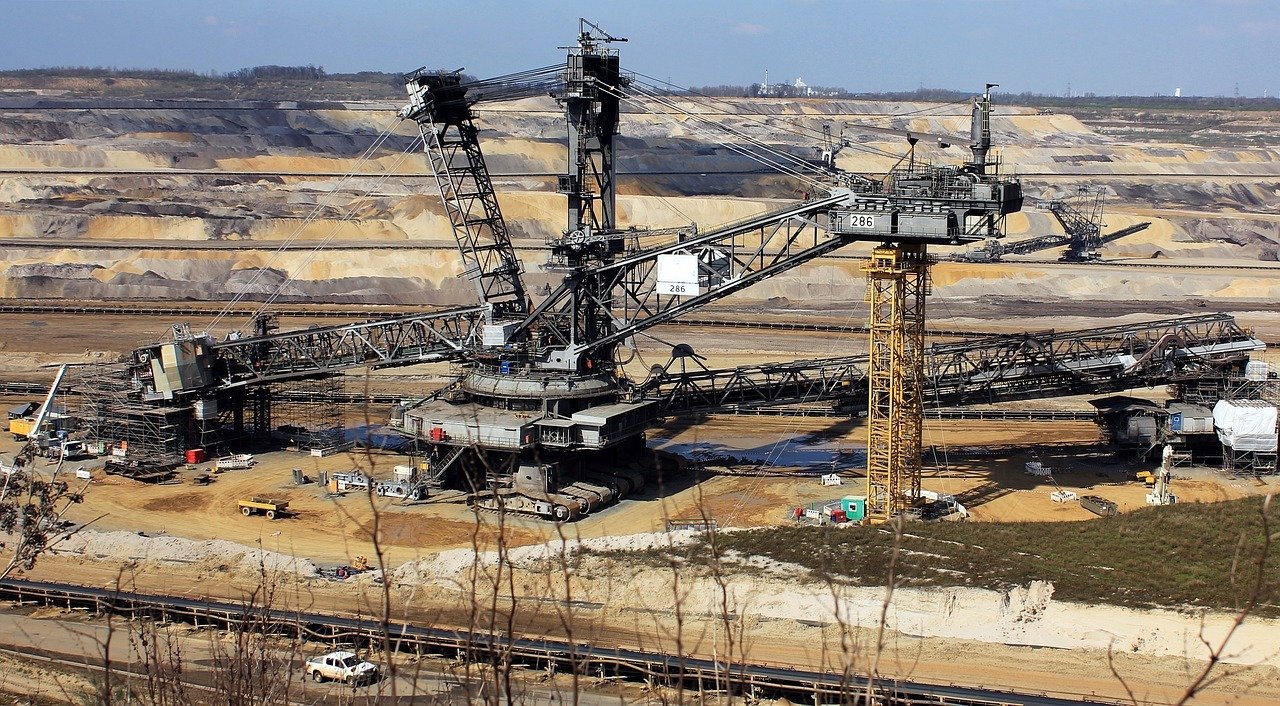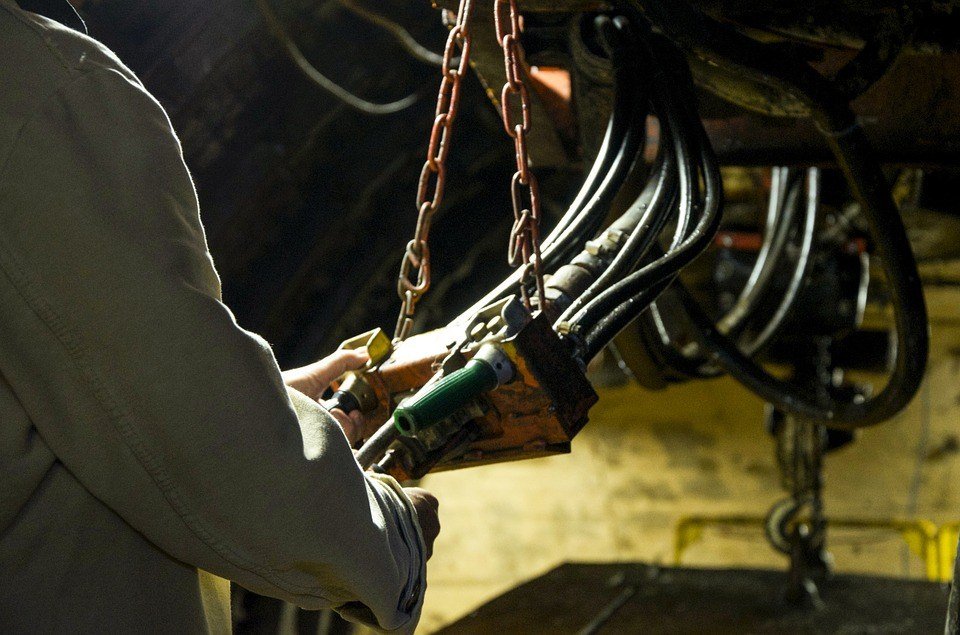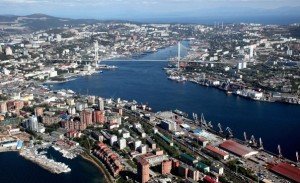Business
Mining in Russia: An economic boost or an environmental threat?
Though mining provides a huge push to the Russian economy, mining’s environmental impacts can never be denied.

Mining is one of the largest industries in Russia, accounting for a large percentage of the world’s mineral products, commodities, metals, oil, and gas.
In fact, oil revenues account for 14 percent of the country’s GDP, and 9.3 percent of Russians are employed in the industrial mining labor force. Furthermore, investment in mineral extraction and metallurgy comprises about 20 percent of total investment in the Russian economy. Needless to say, Russia’s economy would not be the same without the mining industry.
Mining can cause erosions and form sinkholes, as well as contaminate soil and groundwater because of the chemicals from the mining process, hence paving the way for the loss of biodiversity. Left unsolved, these problems will not only create environmental damage but also affect the health and well-being of the local population. Thus, mining companies in Russia are required to follow environmental and rehabilitation codes in order to ensure the safety of locals and the environment.

Raspadskaya is the largest underground mine in Russia. (Source)
But many environmental groups are fighting a losing battle against giant mining companies that continue to neglect the environment. Among them is Bellona Murmansk, a regional environmental group focusing on Russia’s Murmansk region.
“A Moonscape of Bald Hills”
According to the group, sulfur dioxide emission in the area continues to rise year after year, most especially from the town of Nikel, where Kola GMK operates. Kola GMK is a fully-owned subsidiary of Norilsk Nickel, Russia’s top nickel and copper producer and exporter. The subsidiary is located at the Kola Peninsula, an area in the far northwest of Russia.
Statistics released by Bellona Murmansk showed that in 2012, Kola’s plant in Nikel released 63,592 tons of sulfur dioxide. This increased to 74,978 tons in 2013. Kola’s plant for nickel ore located in Zapolyarny, a few kilometers east of nickel, emitted 40,000 tons of gas in 2012. Norilsk Nickel’s plant located in Monchegorsk, south of the Kola Peninsula, produced 33,325 tons of sulfur dioxide in 2012 and 36,617 tons in 2013.
The nickel smelter of Kola GMK has long been a controversial issue between Norway and Russia due to the extreme pollution levels. Deposits of sulfur dioxide can be found in the southern Nikel countryside, characterized by “a bald moonscape of bald hills, barren of plant life for kilometers around.” During summer, the toxic fumes blow northward towards the town proper, making breathing difficult. Sometimes, the rain even burns holes into people’s umbrellas.
Meanwhile, in the county of Finmark, Norway closest to the Russian border, the county governor’s environmental office found out that there has been an increase in the level of heavy metal contamination in freshwater fish from the border region between Russia and Norway. “There is more nickel, copper, and mercury… especially in lakes and sediments,” the officials said.
There are two possible causes for this, according to Helen Anderson, senior engineer at the county governor’s office. “The reason for the increase could be the changes in the production at the smelters on the Russian side of the border. But, long transported pollutants from China could [also] cause the increase in mercury.”
Pollution in the Far East
The far northwest side of Russia is not the only place suffering from industrial pollution. The far east side of the country, specifically the Primorye region, also has an ongoing battle against industrial pollution for the area is also home to a number of mineral mines.
According to Anton Tugushyov, laureate of Bellona’s annual Eco-Jurist prize, several large scale industrial projects continue to threaten Primorye’s rich diversity of rare and protected species. Chief among these projects is the construction of radioactive waste and nuclear storage facility in the city of Fokino. Many local environmentalists protested the prospect of this waste project, and signature campaigns have been initiated to stop construction.
Another environmental problem is the Zveda nuclear naval base at Bolshoy Kamen, where nuclear submarines are decommissioned and dismantled. Pollutants coming from the naval base threaten to poison seawater as well as populations of fiddler crabs.
A new flood control hydropower project led by Russian state-owned hydropower corporation Rushydro and Chinese corporation Three Gorges is also being disputed by many environmentalists because of its negative impact on ecosystems and nature reserves in the Amur River basin. They expressed concern over the possible degradation of the Amur River, the disappearance of spawning areas of many fish species, poor water quality, and increased erosion. They vouched for more environment-friendly measures to protect the settlements of the Amur region from flood risk.
But according to Tugushyov, the biggest environmental problem in the Russian far east is the open coal loading and handling in the Vladivostok Harbor, which creates coal dust that poses a danger to the entire population of the region. Though the residents have already appealed to the local Department of Nature Use for the prohibition of open loading and handling of coal in the harbor, Tugushyov stated that no changes have been, or are planning to be, implemented.

Vladivostok is the administrative center of Primorsky Krai, Russia, located at the head of the Golden Horn Bay, not far from Russia’s borders with China and North Korea. (Source)
Growth over Environment
According to The Moscow Times, two of the main reasons for environmental degradation are inefficiency and wastefulness. As old infrastructure and production facilities are stretched to their limits, they use up more fuel and water. In fact, Russia is touted as the least efficient economy in the world—to produce a unit of output, the country uses almost double the amount of energy as China and up to four times as much as other industrial countries.
Furthermore, few of these facilities have been upgraded to meet new environmental and efficiency standards, since the law that sets these environmental regulations does not encourage it. As a result, carbon emissions and pollution continue to grow and new energy projects that threaten to further contaminate the environment are getting approved.
The groundwork for environmental legislation was laid in a 1992 law titled, “On Environmental Protection.” But starting in 2000 when Vladimir Putin became president, environmental protection steadily weakened. The State Committee for Environmental Protection was then revamped into the Natural Resources Ministry, which is more concerned with extracting resources rather than protecting them.
As for the fines imposed on polluters, Russia’s fines are the lowest among the communist independent states. The process of establishing these fines is also extremely bureaucratic and prone to corruption. The Atomic Inspection Service usually sets a maximum allowable limit that gives a company some slack while working on bringing down pollution to normal levels.
Even Nikolai Gudkov of the Natural Resources and Environment Ministry admitted that the system was problematic. “In practice, companies overstate their calculations in order to set the maximum levels higher and extend the limit agreements every time those run out,” he said.
Call to Action
In Bellona’s conference in St. Petersburg last May 2014 titled, “Ecology in Russia: The Right to Life,” some 150 environmentalists from Russia called for reforms. Alexei Yablokov, Russia’s most esteemed environmentalist, spoke of the need of a principle shift in government policy on the environment, and the necessity of drawing its attention to the country’s most pressing environmental problems.
As for Yelena Vasiliyeva, director of the Volgograd Ecopress, the system of authorizing industrial projects must be improved upon. She said that companies are unable to formulate systematic environmental protection policies because of the lack of necessary legal mechanisms, like environmental insurance and environmental audits.
Some mining companies, however, had the initiative to enact measures that could lessen pollution in the environment. For instance, Amur Minerals Corporation (AIM: BOOM), a nickel copper sulfide exploration and development company operating in the Amur region on the far east side of Russia, has entered into a memorandum of understanding with Aeroscraft Corporation to explore utilization of Aeroscraft’s heavy lift vehicles for the company’s Kun-Manie nickel sulfide copper project.
The use of these vehicles could eliminate the need to construct a 320-kilometer site access road from Baikal Amur to the proposed mining site, thereby reducing start-up costs and lead time. The aircraft’s numerous capabilities like vertical takeoff and landing, independence from ballast, cargo handling system, and fuel efficiency can also eliminate the environmental impact related to the construction and operation of a road. Aeroscraft Corporation’s CEO Igor Pasternak commented, “Amur’s proposed resource-rich mining operation in the Russian Far East for whom Aeroscraft utilization will disrupt infrastructure development requirements and reduce capital expenditures, streamline intermodal logistics, and lessen environmental impacts.”
In spite of this move, other mining companies would be able to comply better if there are people watching them. Another keynote speaker in the Bellona conference was Greenpeace Russia’s Ivan Blokov, who emphasized on the importance of free access to environmental information. He said that in order to save Russia from environmental problems, two things are needed: “First is active people, and the situation is not bad here, and second is information that the government tries so hard not to give us.”
—
This article may include forward-looking statements. These forward-looking statements generally are identified by the words “believe,” “project,” “estimate,” “become,” “plan,” “will,” and similar expressions. These forward-looking statements involve known and unknown risks as well as uncertainties, including those discussed in the following cautionary statements and elsewhere in this article and on this site. Although the Company may believe that its expectations are based on reasonable assumptions, the actual results that the Company may achieve may differ materially from any forward-looking statements, which reflect the opinions of the management of the Company only as of the date hereof. Additionally, please make sure to read these important disclosures.

-

 Crypto2 weeks ago
Crypto2 weeks agoXRP vs. Litecoin: The Race for the Next Crypto ETF Heats Up
-

 Crypto1 day ago
Crypto1 day agoCrypto Markets Surge on Inflation Optimism and Rate Cut Hopes
-

 Biotech1 week ago
Biotech1 week agoSpain Invests €126.9M in Groundbreaking EU Health Innovation Project Med4Cure
-

 Biotech4 days ago
Biotech4 days agoAdvancing Sarcoma Treatment: CAR-T Cell Therapy Offers Hope for Rare Tumors

























